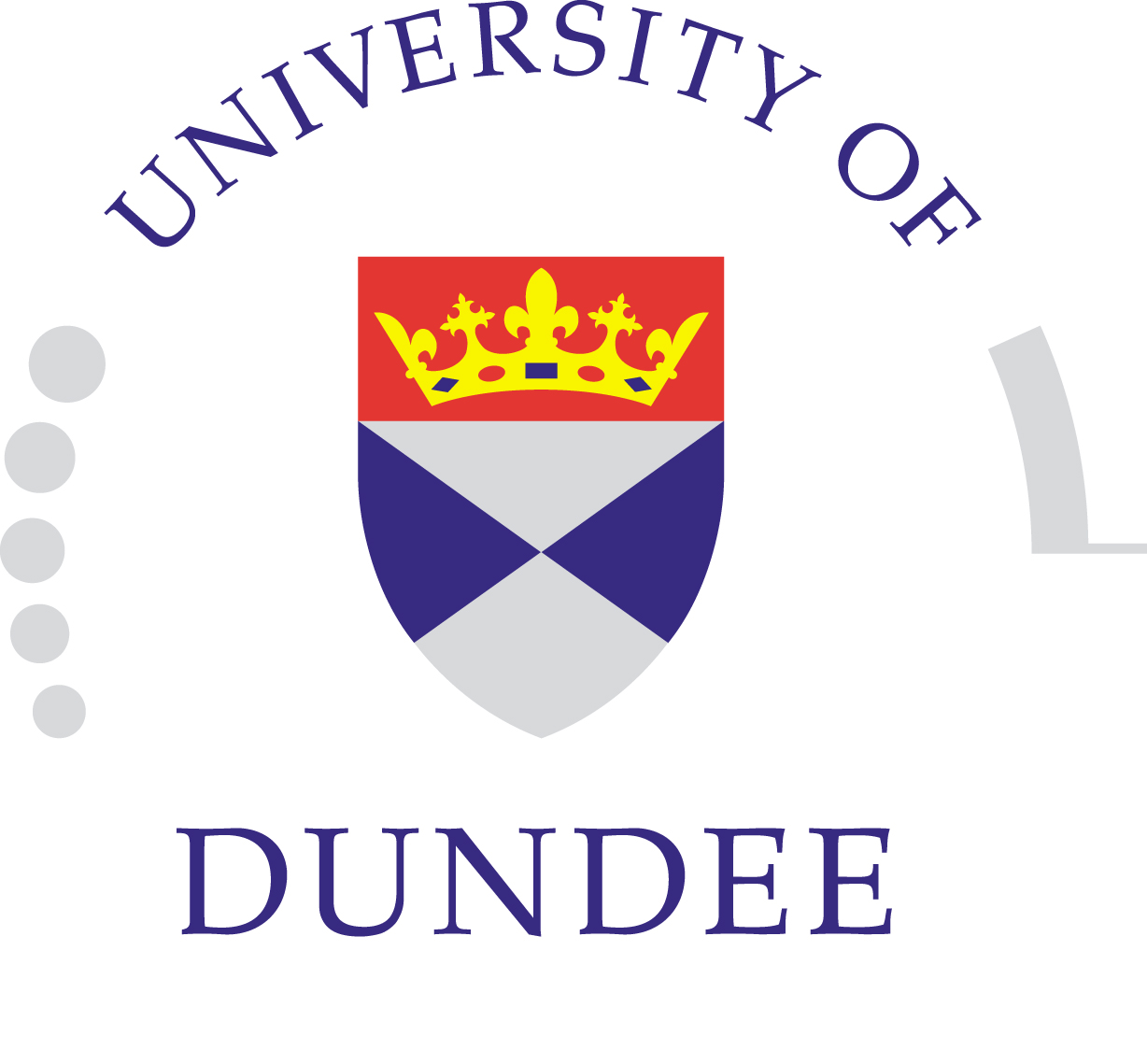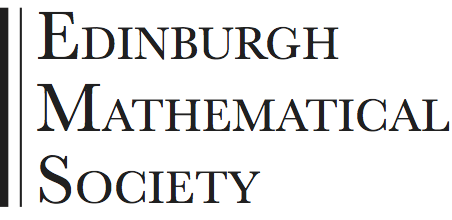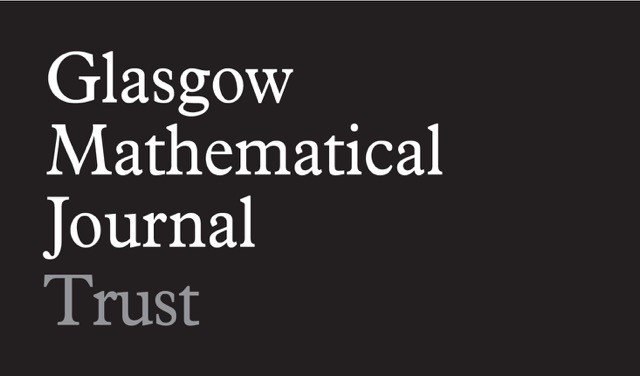







Schrödinger equations: Asymptotics, Integrability and Beyond
Third workshop: Dundee, 25 September 2017
Waves in Fluids
18:30 on 24 September 2017, at the Jute Cafe Bar (at the DCA).
Coffee
10:00-10:45 Alfred Osborne (Torino, Nonlinear Waves Research)
Nonlinear Fourier Analysis: Integrability and Non Integrability
in the Study of Ocean Surface Waves
10:45-11:30 Roger Grimshaw (University College London)
The nonlinear Schrodinger equation: space and time
11:30-12:15 Zhan Wang (Chinese Academy of Sciences)
Dynamics of patches of wind ripples: what happens after initial focusing?
12:15-13:45 Lunch & Coffee
13:45-14:30 Oana Pocovnicu (Heriot-Watt)
A two-soliton with transient turbulent regime for a focusing cubic nonlinear half-wave equation on the real line
14:30-15:15 Agissilaos Athanassoulis (Dundee)
Localized instabilities of the Wigner equation as a model for the emergence of Rogue Waves
15:15-16:00 Yong-Sung Park (Dundee)
On moving contact line during reflection of a solitary wave
Discussion
We are grateful for the financial support from the Edinburgh Mathematical Society, the Institute of Mathematics and its Applications, the Glasgow Mathematical Journal Learning and Research Support Fund, the London Mathematical Society and the University of Dundee. This is an open meeting. If you are interested in attending this meeting, please email Agis Athanassoulis for more information about possible support for travel and accommodation.
Travel information is here. Where possible, accommodation will be arranged in Queen's Hotel.
Abstracts:
Alfred Osborne, Nonlinear Fourier Analysis: Integrability and Non Integrability
in the Study of Ocean Surface Waves
In the presently known mathematics of nonlinear ocean waves integrability exists in
shallow water in 1+1 dimensions (the Korteweg-deVries (KdV) equation) and 2+1
dimensions (the Kadomtsev-Petviashvili (KP) equation). In deep water the only 1+1
dimensional integrable system is the nonlinear Schroedinger (NLS) equation and none
have been found in 2+1. It follows then that 99% of ocean waves are described by 2+1
dimensional nonintegrable dynamics (Examples are: the 2+1 NLS, Dysthe, Zakharov
and Euler equations). However, the integrable cases have been used to study ocean wave
data and to model data extensively using the method of the inverse scattering transform,
suggesting that the method is generic and useful because integrability gives us so many
wonderful mathematical, physical and numerical tools [Osborne, 2010].
When a nonlinear wave system is integrable, we often invoke finite gap theory (FGT,
another name for the periodic IST), a complete theory of nonlinear Fourier analysis
(NLFA) for periodic/quasiperiodic boundary conditions. This allows us to study in very
great detail the above integrable cases (and many more) for which a variety of coherent
structures occur naturally in the formulations. These include Stokes waves, solitons,
vortices, breathers and superbreathers. Thus, when integrability happens we have a
wonderful kind of nonlinear Fourier analysis for which the coherent structures form
the nonlinear Fourier basis functions of the dynamics.
Can the integrable FGT mathematics of nonlinear wave equations be extended to
study 2+1 deep-water waves? Are there nearby integrable equations that can serve as
starting places for the study of 2+1 ocean waves? Do analogues of breathers and
superbreathers exist in 2+1 dimensions? Can we develop nonlinear Fourier tools for
the study of 2+1 ocean waves? Can numerical tools be developed for the study of wave
systems with large genus (1000 or 10,000) that are necessary to study complex wave
systems?
Can we analyze measurements of ocean waves in 2+1 from antenna arrays,
directional buoys, radar and lidar [Costa, et al 2014] [Osborne, et al, 2017]? Can we
study the influence of breathers and superbreathers on the properties of ocean waves
and their associated risk level for the design of ships, and floating and fixed structures
for oil and gas exploration and production? Can we assess the influence of long-term
climate change on the natural increase in oceanic wave coherent structures due to the
formation of more energetic sea states over time? What can integrable/quasintegrable
methods tell us about the physics of wind waves? Can integrable/quasintegrable methods
be used as an alternative formulation for wind wave forecasting and hindcasting? These
and many more questions will be addressed.
Osborne, A. R., Nonlinear Ocean Waves and the Inverse Scattering Transform (Academic Press, Boston, 2010).
Costa, et al, Soliton Turbulence in Shallow Water Ocean Surface Waves, Phys. Rev. Lett. 113, 108501, 2014.
Osborne et al, Breather Turbulence in Nonlinear Ocean Waves, in preparation, 2017.
Roger Grimshaw, The nonlinear Schrodinger equation: space and time : The nonlinear Schrodinger equation (NLS) is a canonical evolution equation, which describes the dynamics of weakly nonlinear wave packets in time and space in a wide range of physical media, such as nonlinear optics, cold gases, plasmas and fluid mechanics, especially for water waves. Due to its integrability, the NLS provides families of exact solutions describing the dynamics of localised structures which can be observed experimentally in applicable nonlinear and dispersive media of interest. Depending on the co-ordinate of wave propagation, it is known that the NLS can be either expressed as a space- or time-evolution equation. Here, we discuss and examine in detail the limitation of the first-order asymptotic equivalence between between these forms of the NLS. In particular, we show that the the equivalence fails for specific periodic solutions. We will also emphasise the impact of the studies on application in geophysics and ocean engineering.
Zhan Wang, Dynamics of patches of wind ripples: what happens after initial focusing? : Water waves can span scales of hundreds of kilometers to a few millimeters with fascinating and complex behaviors. At small scales, when gravity and surface tension are equally important, water waves exhibit a large variety of phenomena, one of which is the combination of geometric and nonlinear self-interaction focusing of localized disturbances. This phenomenon is very much like strong laser pulses propagating through a Kerr medium. We describe the reasons for this similarity and how the evolutions in the two cases differ past the collapse time.
Oana Pocovnicu, A two-soliton with transient turbulent regime for a focusing cubic nonlinear half-wave equation on the real line : In this talk we consider a nonlocal focusing cubic half-wave equation on the real line. Evolution problems with nonlocal dispersion naturally arise in physical settings which include models for wave turbulence, continuum limits of lattice systems, and gravitational collapse. The goal of the talk is to present the construction of an asymptotic global-in-time modulated two-soliton solution of small mass, which exhibits the following two regimes: (i) a turbulent regime characterized by an explicit growth of high Sobolev norms on a finite time interval, followed by (ii) a stabilized regime in which the high Sobolev norms remain stationary large forever in time. This talk is based on joint work with P. Gerard (Orsay, France), E. Lenzmann (Basel, Switzerland), and P. Raphael (Nice, France).
Agissilaos Athanassoulis, Localized instabilities of the Wigner equation as a model for the emergence of Rogue Waves :
In this work, we model Rogue Waves as localised instabilities emerging from homogeneous and stationary background wavefields, under NLS dynamics. This is achieved in two steps: given any background Fourier spectrum P(k), we use the Wigner transform and Penrose’s method to recover spatially periodic unstable modes, which we call unstable Penrose modes. These can be seen as generalised Benjamin–Feir modes, and their parameters are obtained by resolving the Penrose condition, a system of nonlinear equations involving P(k). Moreover, we show how the superposition of unstable Penrose modes can result in the appearance of localised unstable modes. By interpreting the appearance of an unstable mode localised in an area not larger than a reference wavelength as the emergence of a Rogue Wave, a criterion for the emergence of Rogue Waves is formulated. Our methodology is applied to delta spectra, where the standard Benjamin–Feir instability is recovered, and to more realistic spectra as well. In that context, we present a scheme for the numerical resolution of the Penrose condition and estimate the sharpest possible localization of unstable modes.
Finally, we outline some mathematical questions that are opened by this work.
The talk includes recent and ongoing work with Gerassimos Athanassoulis (NTUA), Themis Sapsis (MIT) and Mariya Ptashnyk (Dundee).
A.G. Athanassoulis, G.A. Athanassoulis & T.P. Sapsis, Localized instabilities of the Wigner equation as a model for the emergence of Rogue Waves, J. Ocean Eng. Mar. Energy (2017)
Yong-Sung Park, On moving contact line during reflection of a solitary wave : In a set of wave flume experiments for a solitary wave reflecting off a vertical wall, two interesting observations were made: (i) a small eddy was generated towards the end of the reflection process and left behind the wave; and (ii) the contact angle formed by the free surface and the vertical wall never increased over 130 degrees. In the talk, both of the observations will be explained through boundary layer theory and the local similarity solutions of Stokes flow near the contact line, respectively. More details are as below:
Our experimental and theoretical study reveals that the wall boundary layer acts as drain for the flow near the free surface towards the moving contact line for most of the reflection process. However, during the last phase of the reflection process flow reversal occurs inside the wall boundary layer, and the free surface flow forms a jet ejected into the water body, which later evolves into a small eddy.
In a number of experimental measurements with very different length scales and geometrical configurations, where flow is dominated by inertia, there appears to be a limiting value for the advancing contact angle. Noticing that each steady motion of the moving contact line with different translation speed is linked by a hinged motion, the shear stress balance at the incipient of the hinged motion is considered. It is shown that the angular velocity is a decreasing function of the contact angle and approaches zero at the critical angle at which the local similarity solution becomes singular. Therefore the advancing contact angle cannot increase beyond the critical angle which is numerically very close to the experimentally observed values.
Local organiser:
Agissilaos Athanassoulis